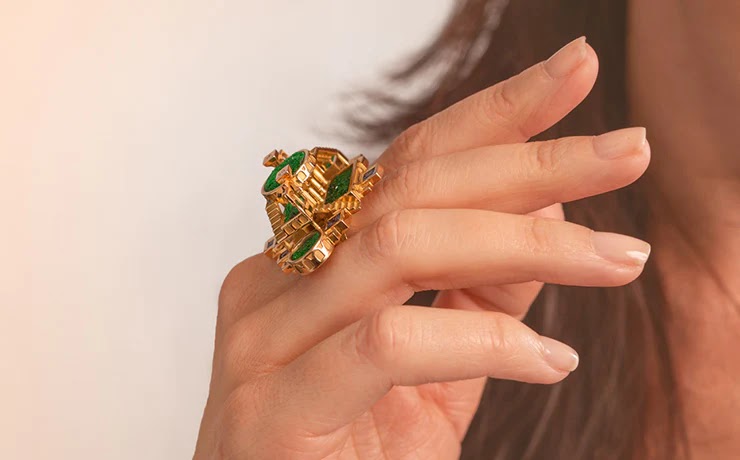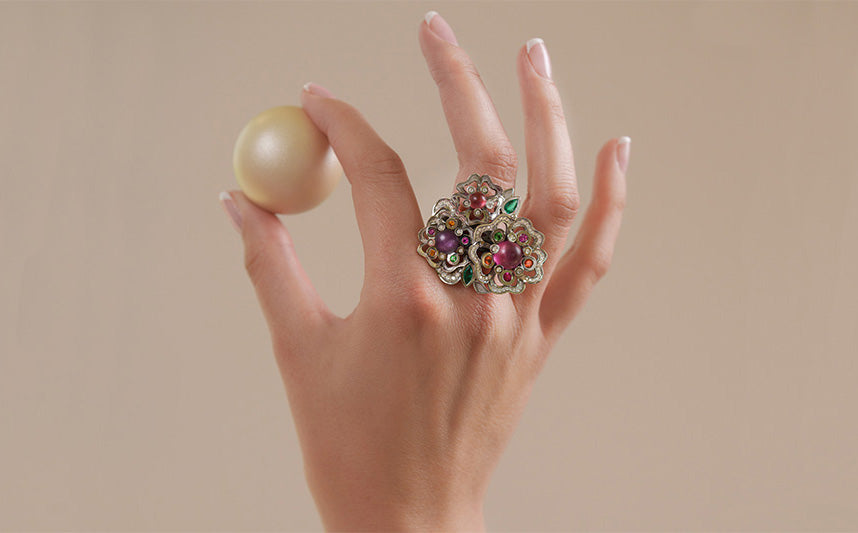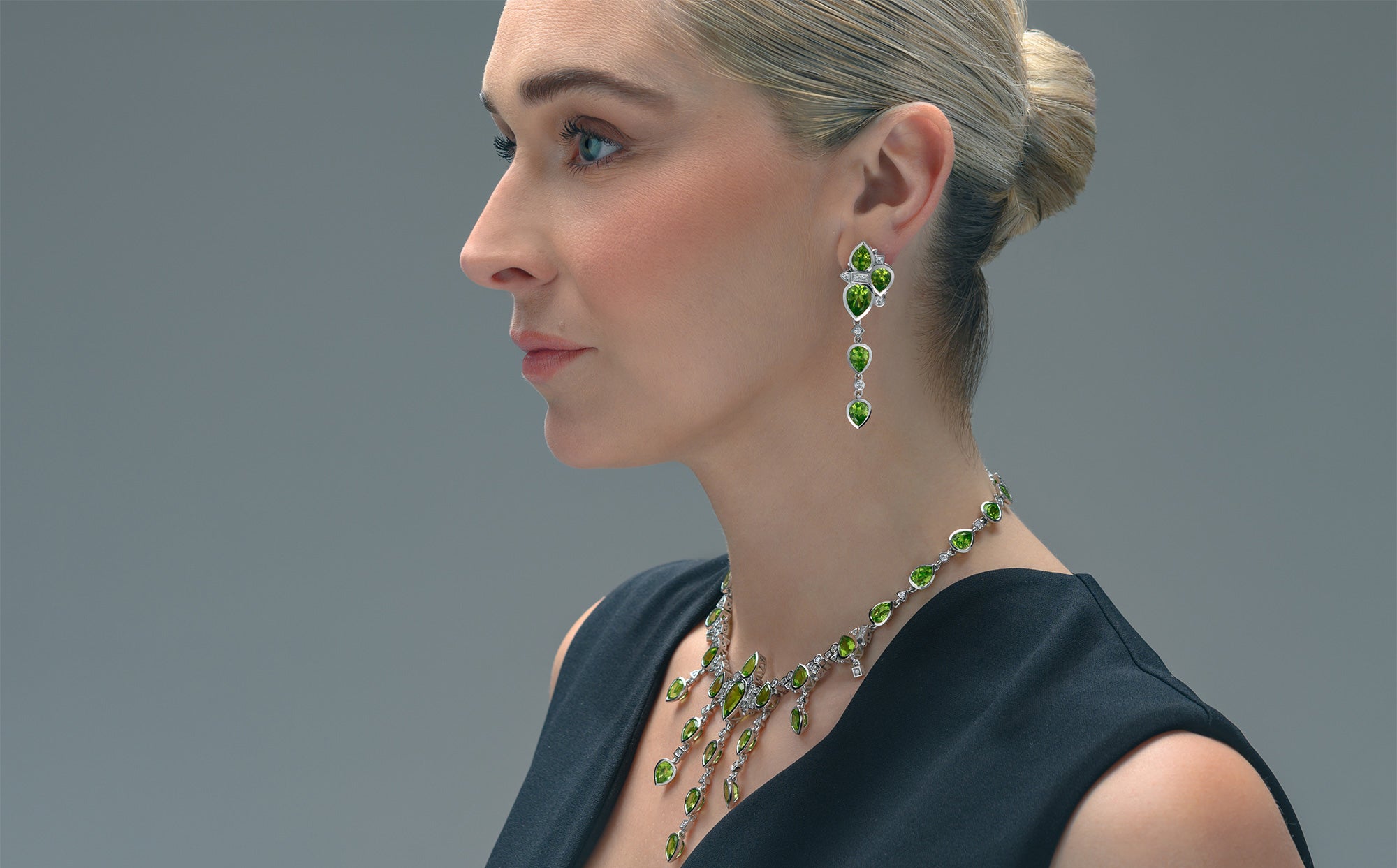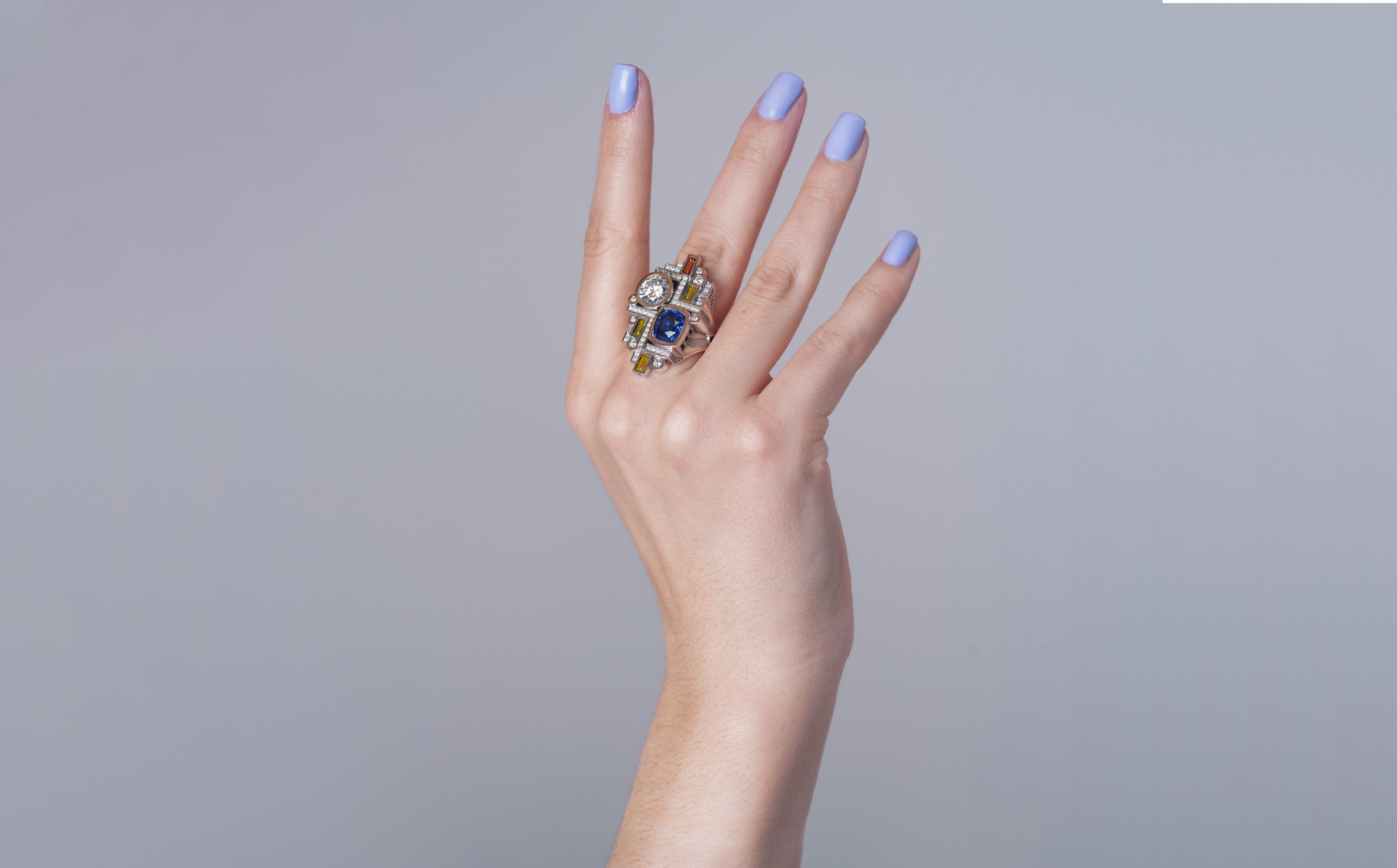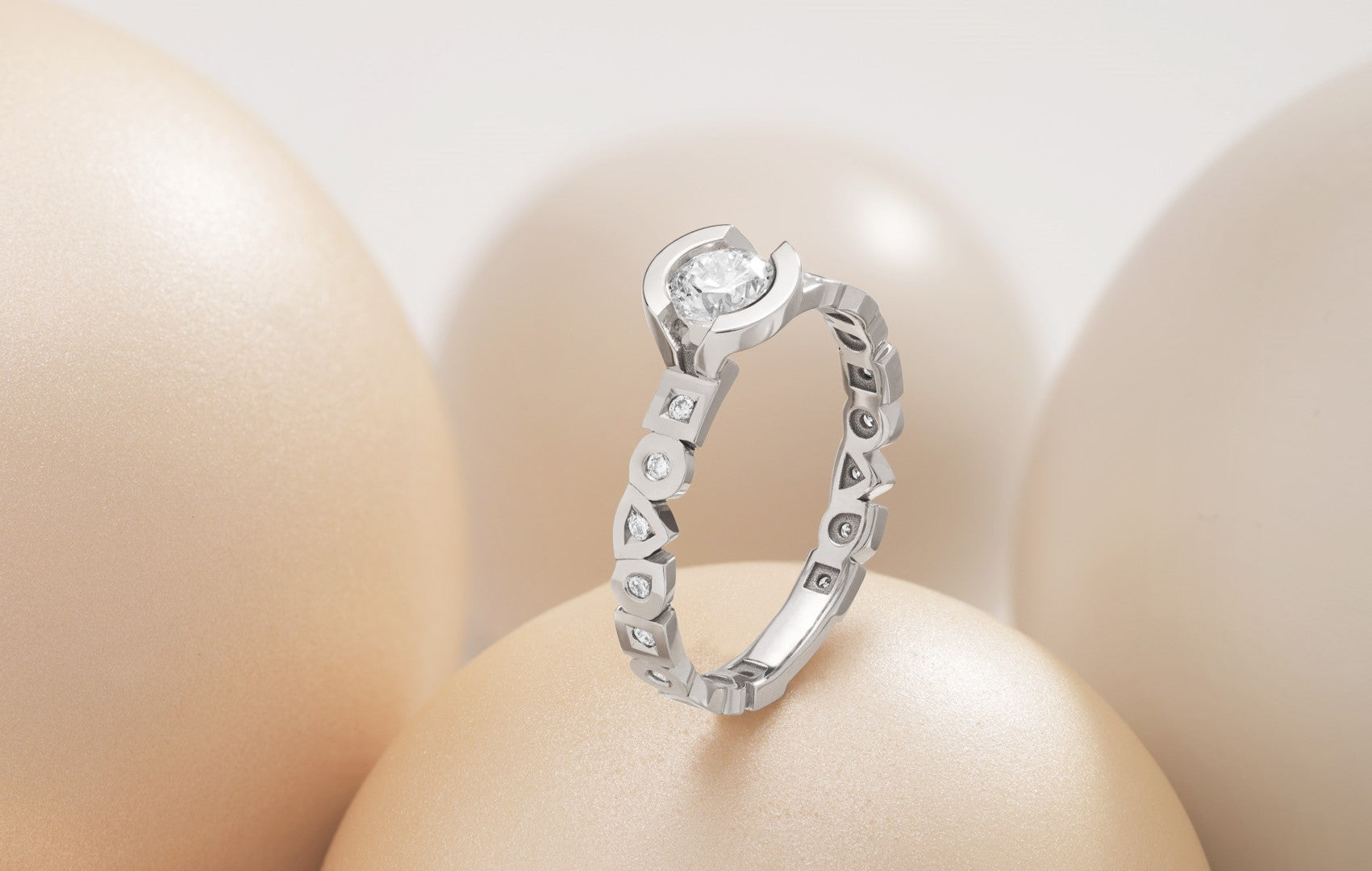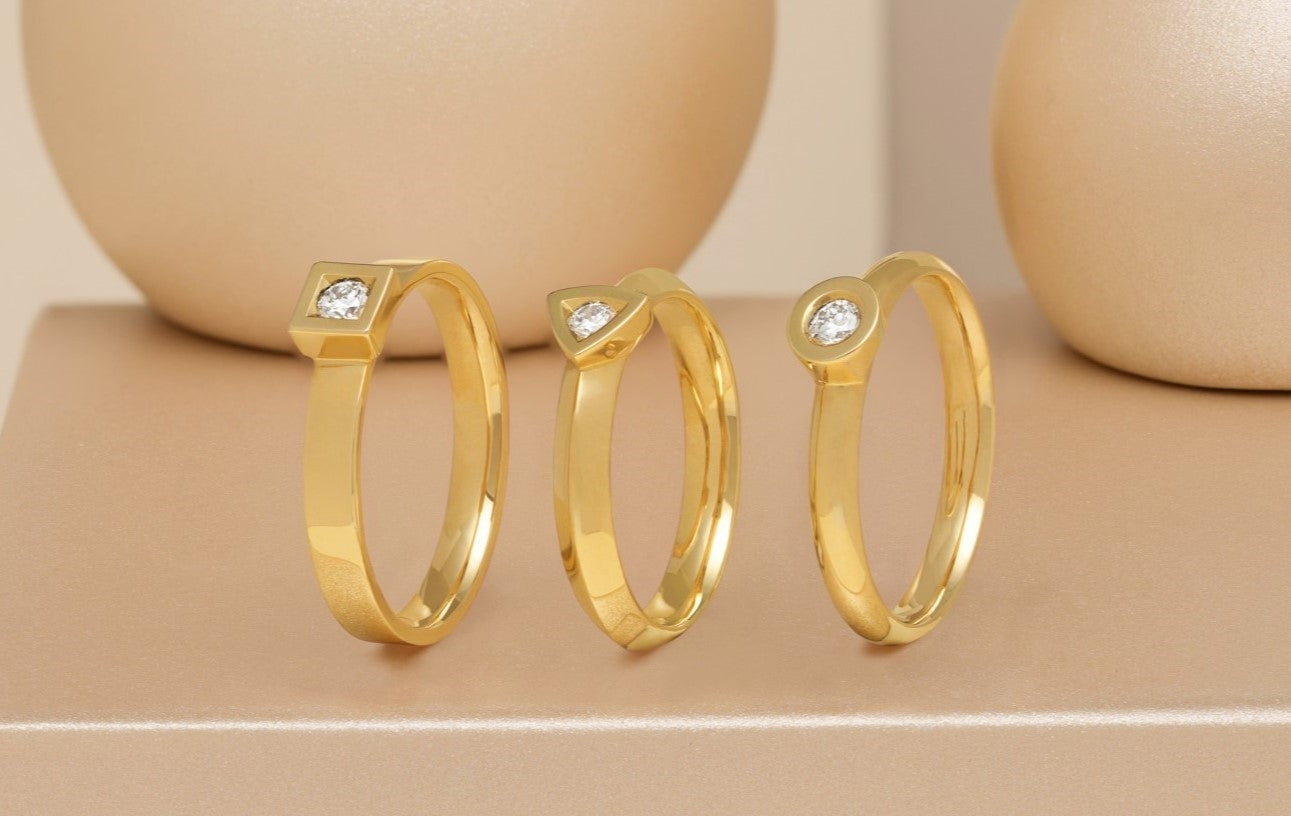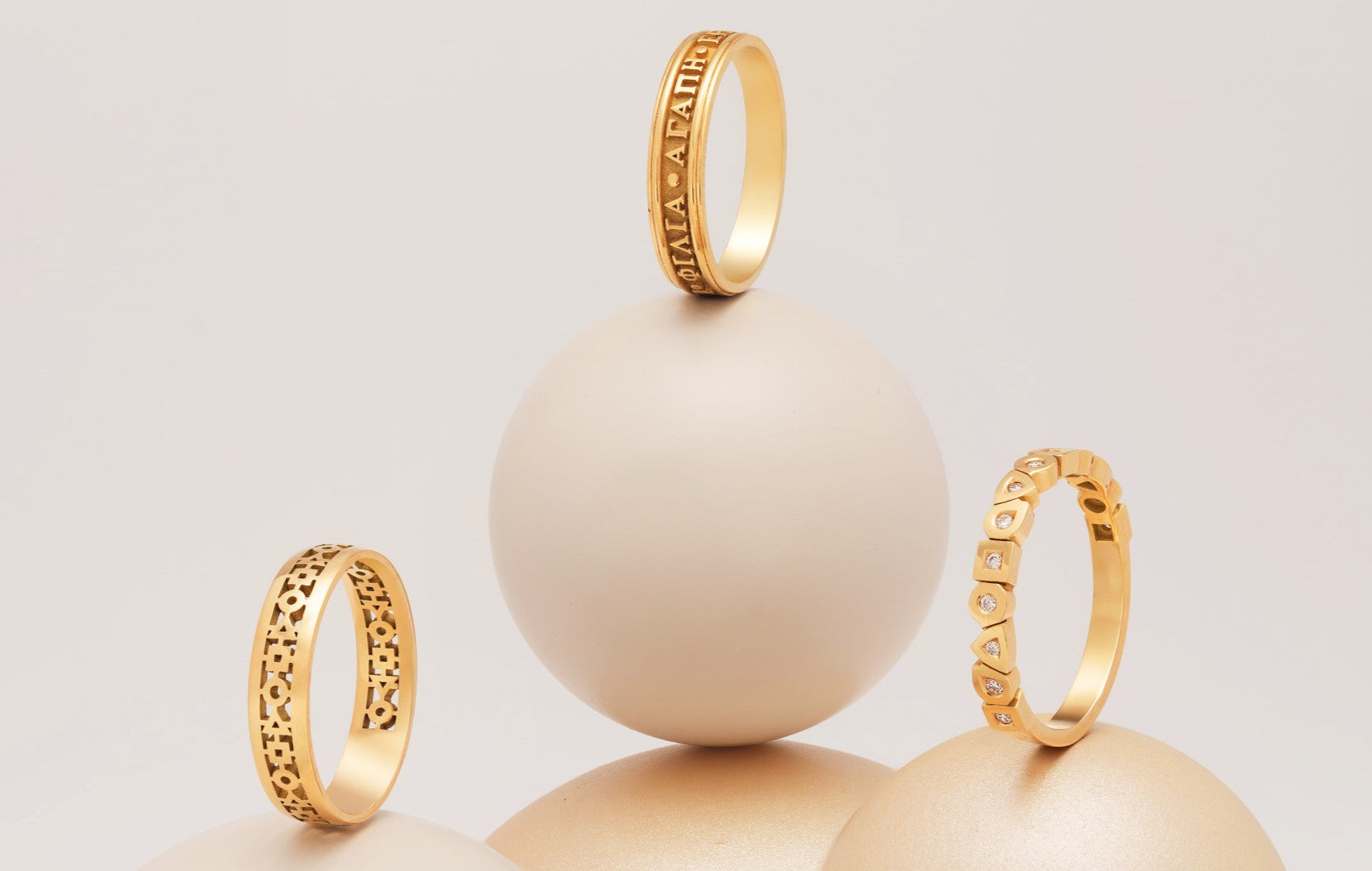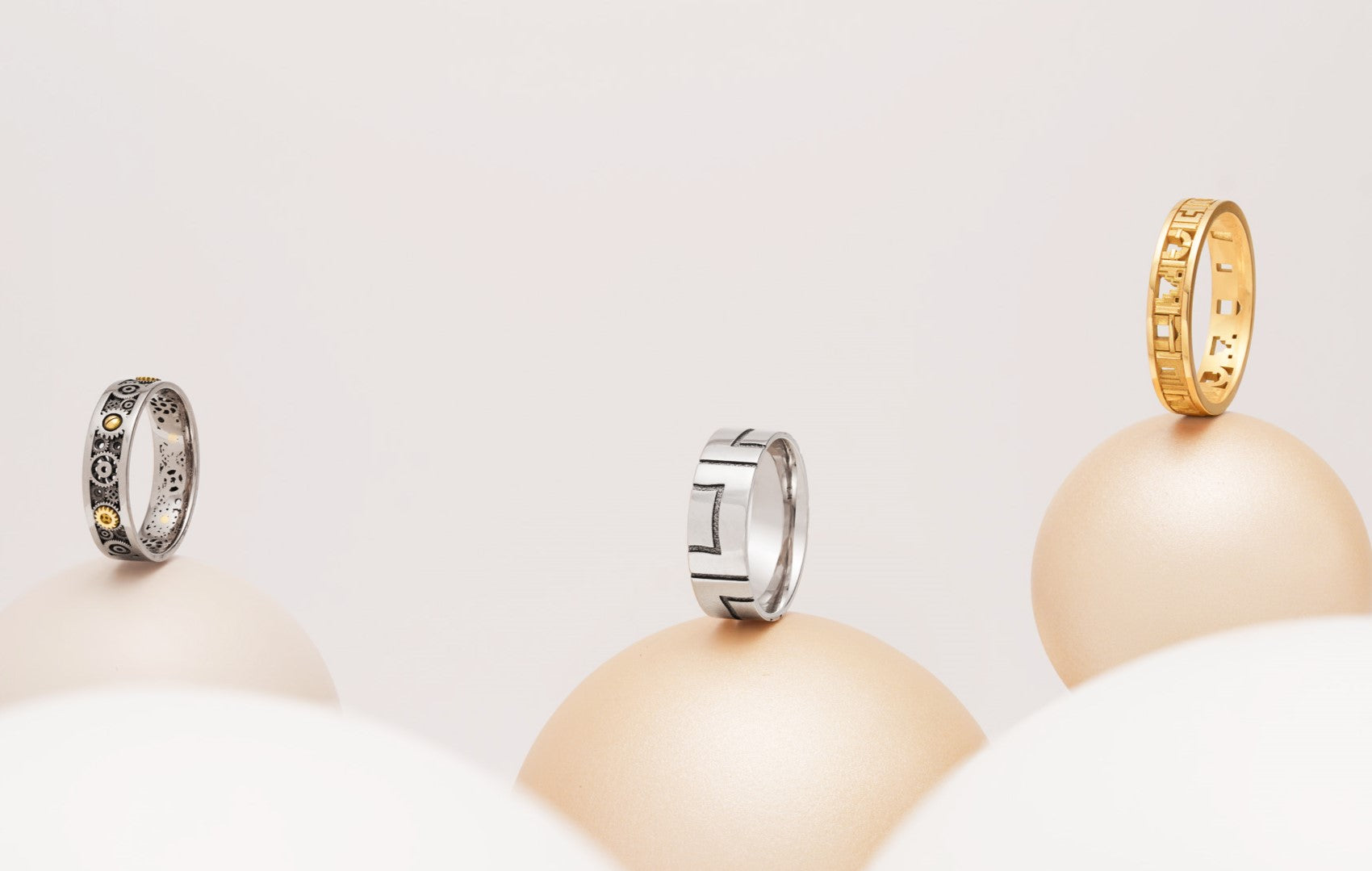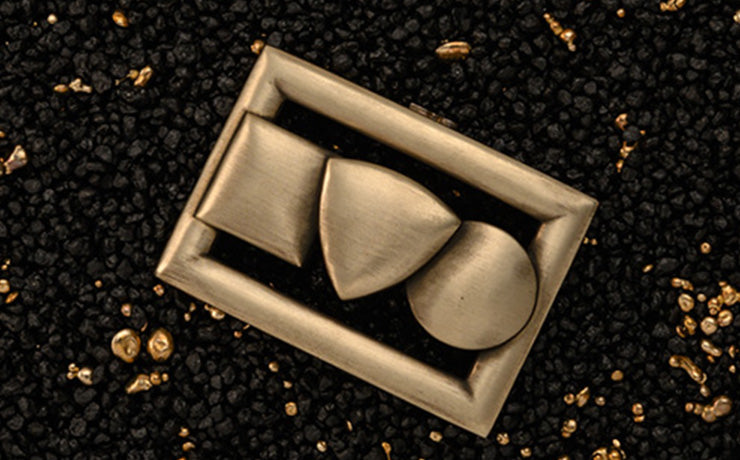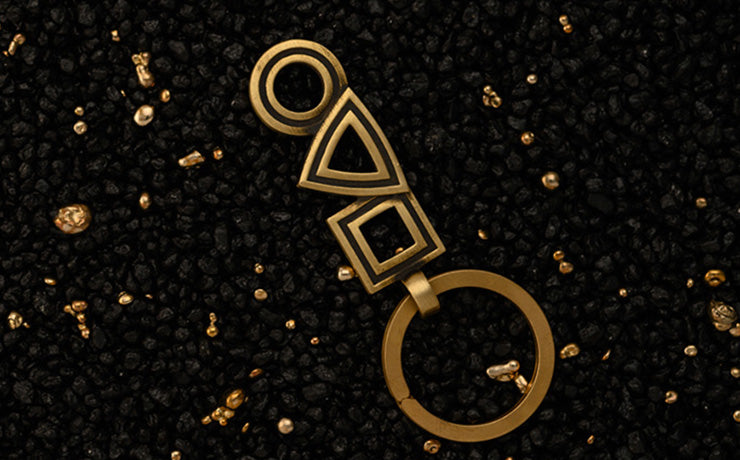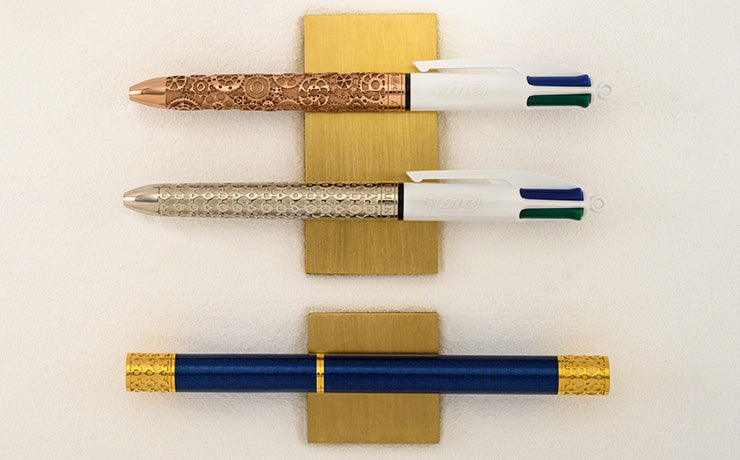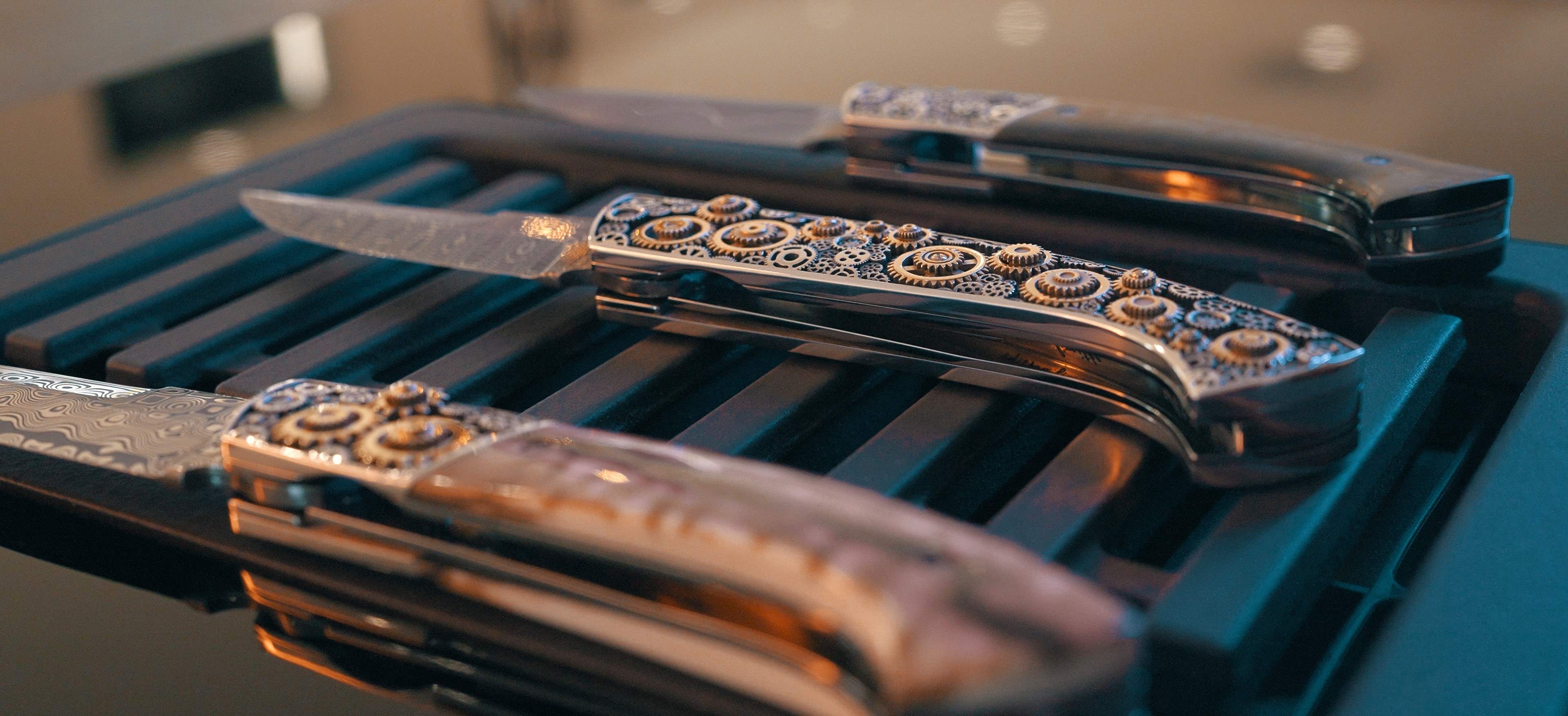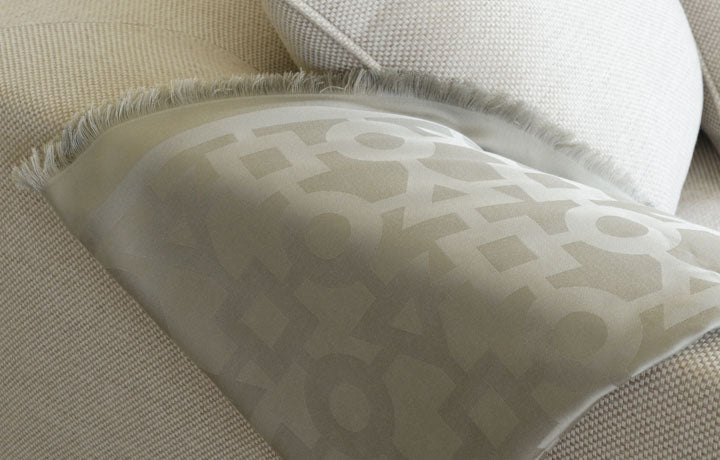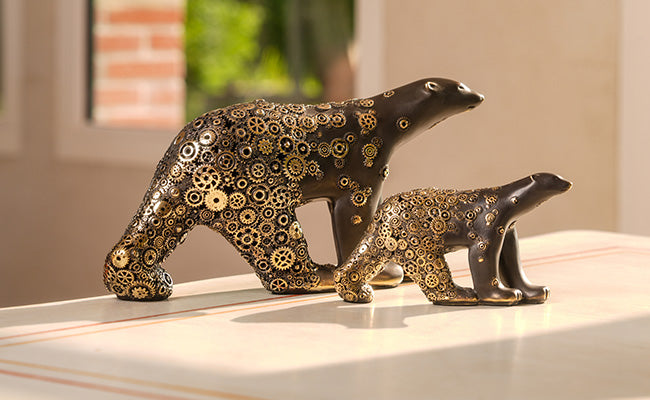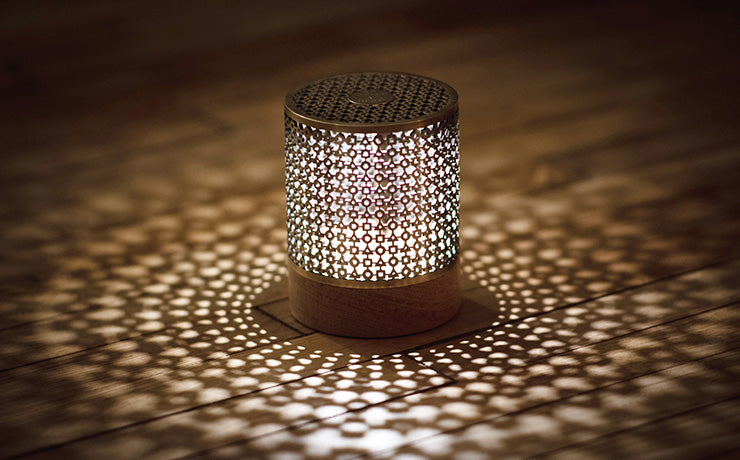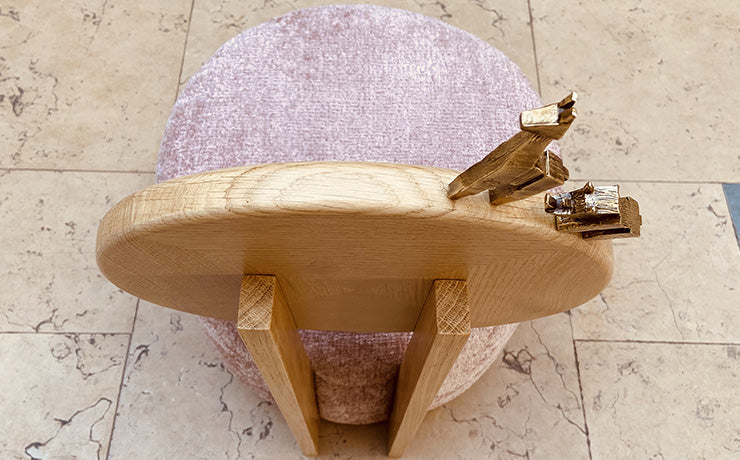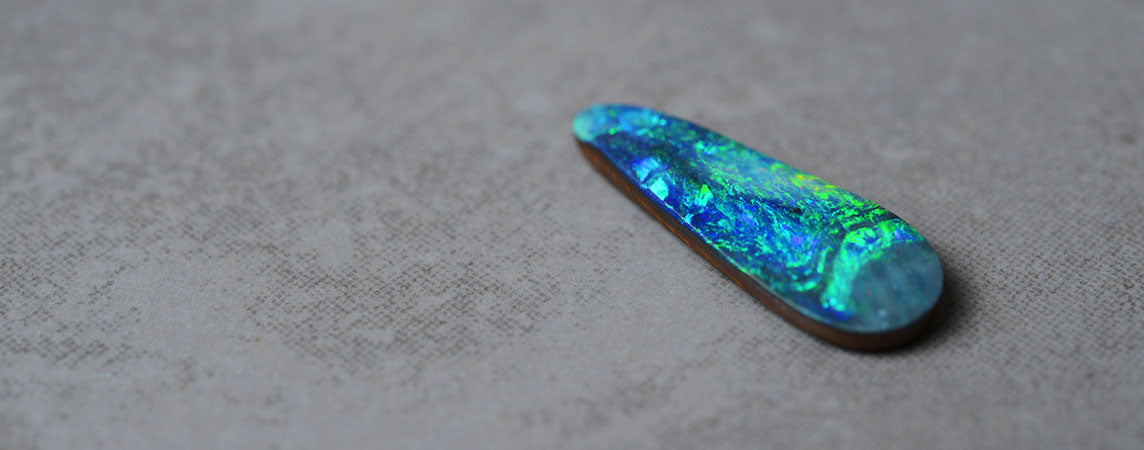
L'OPALE
Opal
Opal is an atypical stone that invites dreams and fantastic stories. As we gaze upon it, we make it our own, imagining a world, a landscape, as the light sublimates it.
Le fantastique jeu changeant de l’opale est le reflet des variations d’émotions et d’états d’esprit des gens. A chacun son opale, son humeur, sa vision des choses. Les opales sont comme les émotions de l’homme : toujours différentes et toujours nouvelles. Philippe Tournaire affectionne tout particulièrement cette pierre de caractère, qui éveille notre curiosité et nous charme de par sa beauté énigmatique et inattendue.
Dans bien des cas, lorsqu’on pense « opale », on pense en premier lieu aux superstitions qu’il en découle, qui sont parfois à connotation péjorative.
En réalité, nous verrons à travers les explications qui suivront que l’opale est considérée comme porteuse d’espoir, d’amour et de pureté pour de nombreux peuples, et ce depuis la nuit des temps. Tout ce que la nature peut offrir de splendeur semble se trouver réuni dans les reflets luxuriants et variés d’une opale de qualité : le feu, les éclairs aux couleurs de l’arc-en-ciel et la douce brillance des mers australes. Génératrice de maintes légendes et superstitions, cette pierre surprenante connaît une réputation changeante à travers les âges et les cultures.
Opal: technical data and handling tips
– Age de l’opale : Les scientifiques pensent que la plupart des dépôts d’opale se sont formés entre 15 et 30 millions d’années auparavant.
– Formule cristalline de l’opale : SiO2, nH2O. L’opale est un Dioxyde de Silicium hydraté et n’a pas de structure cristalline.
– Dureté : De 5,5 à 6,5 sur l’échelle de Mohs. Pour information, l’échelle de Mohs est une échelle inventée par le minéralogiste Mohs et qui a pour but de mesurer la dureté d’une gemme, c’est à dire sa capacité à résister aux rayures. Repère : l’échelle de Mohs va de 1 à 10, le diamant ayant une dureté de 10, et le savon sec et le talc une dureté de 1.
– Nettoyage de l’opale : La masser délicatement avec un linge légèrement humide.
– Précautions : Comme toutes les belles choses, l’opale nécessite qu’on prenne soin d’elle. Les changements de température soudains peuvent provoquer un craquement de l’opale, celle-ci étant composée d’eau. Attention donc aux brusques passages du chaud au froid, comme lors du nettoyage aux ultrasons.
– Les dérivés de l’opale : Il existe sur le marché des opales synthétiques mais aussi des doublets et des triplets, composés généralement d’une fine couche d’opale, synthétique ou non. Ce qui distingue une vraie opale d’une fausse est le degré d’uniformité des reflets de couleurs. En regardant la pierre de profil, si l’on voit des colonnes de couleurs anormalement uniformes, il s’agit d’une fausse opale. Aussi, si on la regarde d’en haut, l’opale naturelle montre des reflets de couleurs en forme de coups de peigne, tandis que la fausse opale montrera des reflets en forme d’alvéoles de nids d’abeilles qui s’apparentent aussi à la peau de serpent.
Opal, water and the fire of colors
This "stone of riddles", as Philippe Tournaire calls it, was formed by changes in sea level, filling cracks and cavities in the ground with deposits such as silica gel. Opal is composed of between 3% and 30% water, and must therefore be handled with care. It is in fact a hydrated silicate with the particularity of revealing rainbow-colored reflections: like a drop of gasoline on water. That's what makes it so special. When such a play of colors takes place, we speak of noble opal or precious opal. This unique iridescence results from the absorption and reflection of colors by the silica microbeads that make up the opal. The more evenly the beads are distributed, the more intense the play of colors; conversely, when the beads are randomly distributed, there is no play of sparkling colors. This is known as common opal. Hence the singularity and rarity of this stone with its extraordinary reflections. The color play of opals is always very different, depending on the color of the stone and the way the light plays with it. There are several types of reflections, known by names such as "harlequin", "peacock tail", "flash", "small dots"...
The value of an opal
We judge opals according to our own criteria of beauty, our own tastes and what the opal inspires in us. On a more technical level, opals are judged according to 5 very distinct factors: the type of opal, the intensity of its play of colors, its transparency, its clarity and its cut. Pendant trilogy diamonds and opal.
The different faces of opal
Opals can take any shape and are known by many different names. The 4 largest opal varieties are listed below:
L’opale noire
L’opale noire peut déployer un beau jeu de couleurs intenses, sur fond foncé. Provient de Lightning Ridge, New South Wales en Australie, qui est la première source mondiale d’opale noire. On en trouve aussi dans le Queensland – Nord-Est de L’Australie - et en Australie du Sud. Cette opale est l’une des plus convoitées et des plus rares au monde.
L’opale boulder
L’opale boulder (l’opale-roche) est celle qui laisse entrevoir un liseré de couleurs étincelantes, entre des couches marron qui constituent la roche-mère de l’opale. Cette roche-mère peut être soit du grès (sandstone) soit une roche composée d’oxyde de fer (ironstone). Le contraste entre la roche-mère et les veines d’opale renforce l’intensité de ses couleurs. Le seul endroit au monde où sont extraites les opales boulder est le comté de Winton dans le Queensland.
L’opale blanche
L’opale blanche ou dite opale est transparente. Elle est la plus connue du grand public car bien plus fréquente et facile à trouver, par rapport à l’opale haut de gamme telle que l’opale noire, dont l’éclat est bien souvent plus vif. On la trouve à Mintabie, Coober Pedy et Andamooka en Australie du Sud ainsi qu’à White Cliffs à New South Wales .
L’opale de feu
L’opale de feu est une opale orange vif qui ne montre pas forcément un jeu de couleurs. Elle peut être taillée avec facettes, tandis que les opales avec jeu de couleurs sont souvent taillées en cabochon voir même conservent leur forme d’origine pour garder un maximum d’effet. Elle se trouve principalement au Mexique, dans les Etats de Querétaro et de Sonora, ainsi qu’à Mexico. A hauteur de 90% environ, les opales proviennent d’Australie. Ce pays produit donc la majorité des opales noires, blanches et boulder. Au fil du temps, l’opale n’a jamais cessé de fasciner les cultures de par le monde. Et chaque pays a un rapport bien particulier avec cette pierre envoûtante. C’est le voyage des opales à travers les âges et les continents qui constitue son histoire, ô combien hors du commun. Pendentif avec 3 opales
Opal through the ages
L’origine du terme opale vient du sanskrit « Upala » signifiant « pierre précieuse ». Plus tard les Grecs la nommèrent « Opallios », signifiant « voir un changement de couleur ». L’opale a depuis toujours été honorée par les orientaux, qui l’intitulèrent « Ancre de l’Espérance ». En Grèce Antique, les opales étaient autant estimées que les diamants. Et on lui attribuait le don de prédire l’avenir. En Rome Antique, on la dénommait « la reine des gemmes » car elle avait en elle toutes les couleurs des autres gemmes. L’opale incarnait pour eux le symbole de l’espoir, de la pureté et de l’amour. Ils la positionnaient au 2ème rang après l’émeraude, en terme de valeur.
Au Moyen-âge, l’opale était utilisée pour soigner les maladies liées aux yeux et plus tard les femmes blondes avaient pour habitude de porter accessoires pour cheveux avec opales incrustées, croyant que ces pierres magiques empêcheraient leurs belles chevelures de devenir grises. La couronne du Saint Empereur romain germanique contenait une époustouflante opale, appelée « Orphanus ». On disait qu’elle conservait l’honneur de l’Empire. Fin XVIIIème – début XIXème, l’opale faisait également partie des joyaux de la couronne en France et en Hongrie. Napoléon offrit à l’Impératrice Joséphine « l’incendie de Troie », une opale magnifique aux reflets rouges lumineux.
Les opales du trésor de la Hofburg en Autriche sont aussi réputées : parmi celles-ci se trouve la grande collection de la Princesse Stéphanie de Belgique : ceintures, bracelets, boucles d’oreille, épingles et colliers en opale. La collection de la Reine Victoria n’est pas moins célèbre. Souveraine de l’Australie, patrie des plus remarquables opales noires, la reine avait accès aux pierres les plus prestigieuses. Elle en porta tout au long de son règne et en offrit à ses amis et à ses filles et petites-filles, prônant la symbolique de l’amour et de la pureté que suggérait l’opale. Celle-ci devint très recherchée car la Cour Royale d’Angleterre était alors considérée comme le modèle en matière de mode dans le monde entier.
Au XIX ème siècle toujours, bien que considérée comme porte-bonheur par la Reine, l’opale s’est vue attribuer une toute autre réputation du côté français. Plusieurs théories viendraient expliquer ce phénomène.
La plus plausible étant la suivante : les lapidaires et sertisseurs du XIX ème siècle étaient pénalisés s’ils occasionnaient des dégâts aux pierres en les montant. Ceci leur étant arrivé à plusieurs reprises en manipulant l’opale, ils crurent que cette gemme était de mauvaise augure et donc synonyme de malchance. La popularité de l’opale a cependant été petit à petit réhabilitée entre autres grâce à des personnages de premier plan tels que la Reine Victoria, et la fameuse actrice française Sarah Bernhardt, qui a porté de somptueuses opales lorsqu’elle interpréta Cléopâtre en 1890. Heureusement aussi, une découverte en 1902 à New South Wales en Australie permit d’éclipser cette sombre opinion de l’opale. A Lightning Ridge, les mineurs ont sorti de terre une toute nouvelle forme d’opale précieuse : l’opale noire. Le marché de l’opale connut alors un nouvel essor bien mérité. Quelques années plus tard, les opales ont connu leur âge d’or pendant la période Art Déco (de 1920 à 1939) : les artistes créateurs de modèles leur donnèrent la préférence sur de nombreuses pierres, en raison de leur charme discret.
Depuis la nuit des temps et encore aujourd’hui, l’opale est une pierre à énigmes qui ne risque pas de sombrer dans l’oubli. Elle évoque pour beaucoup une pierre à part entière aux vertus innombrables. Légende ou réalité, libre à chacun d’y croire. Quoiqu’il en soit, les diverses légendes relatives à l’opale et ses vertus renforcent le fait que cette pierre à énigmes restera toujours présente dans les esprits de ceux qui l’admirent. Depuis 40 ans, Philippe Tournaire utilise l’opale à travers des créations de bijoux intemporels qui mettent cette pierre d’exception en lumière.
A ce titre, l’équipe Tournaire propose des ateliers découverte de l’opale au cours desquels de sublimes opales sont présentées et peuvent donner lieu à des créations de bijoux personnalisés.
The guarantee of uncompromising craftsmanship
Our titles and labels





Made in France
Made in our workshop

100% secure payment
3x free of charge possible

Free delivery & returns
100% secure and free

Jewellery committed
Ethical and responsible jewelry

